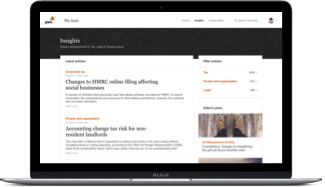The forthcoming withdrawal of LIBOR, along with other equivalent reference rates around the world, carries with it a number of potential tax consequences. Whilst the full withdrawal of LIBOR is not until December 2021, the work required to respond to the changes is not insignificant so it is important that taxpayers have plans in place to allow them to identify, assess and respond to the impact appropriately.
- This change potentially has significant implications. Any agreement which has a LIBOR (or equivalent) reference rate is likely to need to be revised, unless it already contains the flexibility to defer to a different basis. This will impact loan agreements, derivatives, leasing arrangements, supplier/consumer credit agreements and so on.
- Making changes to agreements may well carry tax consequences - there may be taxable gains and losses arising as a consequence of amending agreements; it may be necessary to re-assess the transfer pricing position; hedging relationships may be broken (potentially with no ability to fix the position). It is likely that this change will be relevant from a core corporate tax perspective as well as for transfer pricing and finance & treasury, and this will probably be the case in every territory as reference rates in other worldwide markets are also changing.
- The replacement reference rates aren't calculated on a comparable basis so it's not as straightforward as doing a find and replace exercise. Taxpayers may well need some support with establishing appropriate replacement rates.
The timetable for transition remains unchanged notwithstanding COVID 19 - LIBOR is scheduled to be discontinued by the end of 2021, and to be phased out between now and then. This sounds like a long way in the future but there are some reasons to consider it now:
- It is potentially a complex and time consuming exercise, involving lots of different parts of the business.
- HMRC will be thinking about what actions they may need to take in response. To the extent that problems are identified early, there is much greater scope to discuss these with HMRC.
